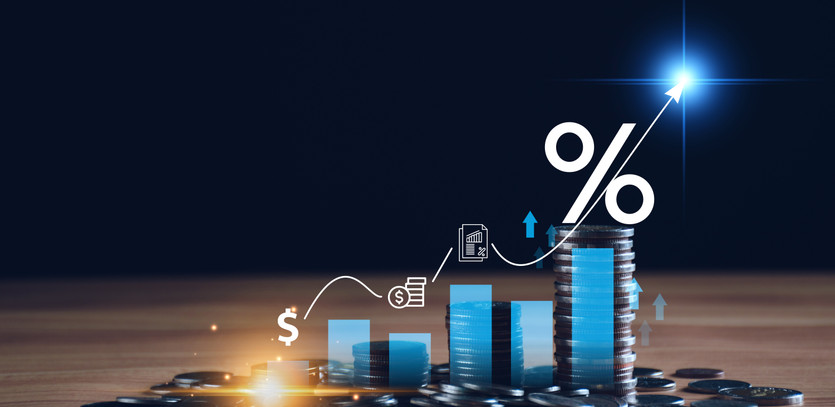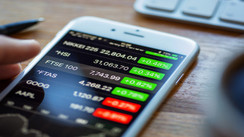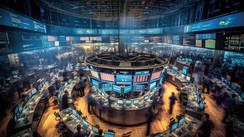The Art of Comparative Shopping in the World of Investments
It's second nature for us to conduct a comparative analysis before plunging into significant investments like a new house or a car, or even something as routine as grocery shopping. So, shouldn't we bring the same scrutiny to the table when our portfolio is at stake, specifically when purchasing stocks or mutual funds? Here, the concept of the risk-free rate of return emerges as a beacon in the murky waters of asset comparison. Join us as we untangle the knots of the risk-free rate of return and explore its role in guiding investors through pivotal financial decisions.
Unearthing the Concept: What Is the Risk-Free Rate of Return?
In the investment lexicon, the risk-free rate of return is a theoretical rate of return expected from an investment devoid of any risk. In other words, it's a chimera—a compelling concept that, unfortunately, is non-existent in real-world markets. Despite this, it is a crucial compass that assists investors in gauging market conditions and weighing different assets.
Investors across the globe place their bets on an array of assets, such as stocks, bonds, real estate, or certificates of deposits, with a view to reaping a return on their capital. Logically, riskier assets like stocks should yield higher returns than safer alternatives like bank certificates of deposit.
In an ideal world, the risk-free rate of return is a sure-shot prediction over a defined period, with no investment risk or default risk, and consistently meets investor expectations. However, this utopia contrasts starkly with reality, where every investment is imbued with inherent risks. Nevertheless, close-to-risk-free assets, such as U.S. government three-month Treasury bills and 10-year bonds, are often used as proxies for risk-free rates due to their near-zero risk of default.
Risk-Free Rate of Return: A Toolkit for Investors
The cornerstone of any investment blueprint is to maximize returns relative to a risk level an investor can stomach. A few tools, namely the risk premium, the Capital Asset Pricing Model (CAPM), and the Sharpe ratio, are fundamental to managing a portfolio's risk and returns. Intriguingly, all of them incorporate risk-free rates of return.
Risk Premium
The risk premium quantifies the 'extra' returns investors receive for embracing risk. It establishes a comparison between the expected return of an investment and the return from a risk-free alternative. Here's an illustration, using data from December 16, 2020:
- Risk-Free Rate of Return: The 10-year Treasury bond rate is .92%
- Expected Investment Return: The 10-year historical return on the mutual fund is 8%
- Risk Premium: 7.08%
By these parameters, you receive 7.08% for the risk inherent to the mutual fund. The risk premium reveals your earnings for taking the risk, yet it doesn't determine its value.
Capital Asset Pricing Model (CAPM)
CAPM provides an investor with an expected return based on the risk level of the investment. The model incorporates a risk premium and other factors, such as beta (𝛽), which measures how the return of an asset deviates from an index like the S&P 500 or Bloomberg total U.S. bond.
Let's use an example:
- Historical Average Risk Premium: 4.1% (U.S. stock market from 1927)
- Chosen Beta: 1.25
- Expected Return: 10 Year T-bond (.92%) + (Beta 1.25 x Risk Premium 4.1%) = 6.05%
Sharpe Ratio
The Sharpe ratio merges the concepts of the risk premium and CAPM to show investors how well a portfolio meets expected returns using the risk-free rate of return as a baseline. Generally, a Sharpe ratio of one or more is a good indicator for a portfolio.
The Authentic Risk-Free Rate of Return: A Closer Look
The U.S. Treasury 10-year bond and three-month T-bill have traditionally served as near-ideal representations of a risk-free investment, given their track record of steady and predictable returns. However, even these seemingly impervious assets are not entirely devoid of risk. A formidable adversary exists in the form of inflation, a persistent and oftentimes unpredictable force that can erode the purchasing power of your returns.
Inflation is a significant factor that can turn a seemingly risk-free investment into a risky proposition. The real risk-free rate of return considers this pivotal factor. It's not merely the nominal rate offered by your risk-free asset—it's that rate after accounting for the erosion caused by inflation.
Let's delve deeper into the data to demonstrate this. As of December 16, 2020, we find:
- The 10-Year Treasury Bond Rate was at .92%
- The Expected Inflation for the same period was 1.2%
When you subtract the expected inflation from the bond rate, you get the real risk-free rate of return:
- Real Risk-Free Rate: 10-Year Bond Rate (.92%) - Expected Inflation (1.2%) = -.28%
In this case, the calculated real risk-free rate is negative. This tells us that when the inflation rate is higher than the risk-free rate, your 'risk-free' investment isn't free from risk at all. In fact, the investor ends up losing money, as the return doesn't keep pace with the inflation rate.
This example underscores the fact that a truly risk-free rate of return is theoretical and doesn't exist in the real world. When considering your risk-free rate, remember to account for the silent yet powerful player in the background - inflation.
Despite the complications introduced by inflation, U.S. Treasury bonds continue to serve as a widely accepted benchmark for the risk-free rate of return. They offer valuable insights into the workings of the financial market and guide investors in comparing and evaluating various investment options. The key lies in understanding that even the seemingly safest investments come with their own set of risks.
Implications of the Risk-Free Rate of Return for Individual Investors
Risk-free rates of return serve as a guide for investors to assess their investment strategies and asset allocation. Moreover, they can offer valuable insights into economic conditions. For instance, the Treasury term spread (the difference in return between the 10-year Treasury note and three-month Treasury bill) is used by the NY Federal Reserve to anticipate the likelihood of a recession a year down the line.
The Treasury yield curve, mapping the relationship between short and long-term Treasury rates, acts as an economic barometer. The shape of the curve mirrors investor sentiment about the economy— a normal curve signals standard growth, a steep curve indicates economic expansion, while a flat curve suggests slowing growth. An inverted curve, historically, has been a harbinger of every U.S. recession in the past 50 years.
Lastly, the risk-free rate of return can sway stock prices. When these rates are high, corporations must up their game to lure investors and justify the heightened risk. A climbing rate can signal a confident treasury and investors' ability to demand heftier returns. This puts the onus on corporate managers to meet profitability and stock price targets.





